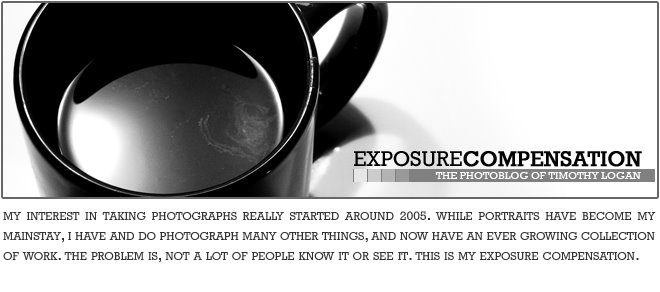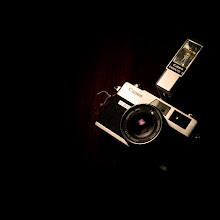31 July 2012
Impossible Project PX680 Test Film V4B - Opacification Returns
Being an Impossible Pioneer means that every so often I am lucky enough to have the opportunity to test new Impossible Project film batches before their mass release to the general public. The batch that I was most recently able to get my hands on contains what I think might be the most exciting news from the Impossible Project since their very first release of a viable instant integral film product - the return of an effective opacification layer.
If you are not overly familiar with instant films, Polaroid, or, the Impossible Project you might be thinking... "huh?" Well, in short, one of the most highly criticized aspects of the Impossible films has been their extreme sensitivity to light immediately out of camera, a problem the original Polaroids solved with a chemical layer called an opacification layer. Basically, the opacification layer was one that shielded the image from light upon ejecting from the camera and then later faded into and remained a clear substance that no longer had any bearing on the appearance of the image. When Impossible took over the reigns of instant film industry many of the chemical components required to make the film just weren't available anymore. Including, as you may have guessed, one of the main ingredients used to create the opacification layer. Well... Naysayers beware, you are about to change your tune.
Once again the Impossible factory team has done the impossible and created an entirely new opacification system that they are claiming to be as strong as the original Polaroid material. Now, for the first time, you can shoot without worrying about shielding your images as they eject from the camera. No more special shades, extra long frog tongues, boxes hanging off the front of your camera, or, even shooting with your camera upside-down... just aim, shoot and enjoy instant film they way it was meant to be enjoyed.
Now, I think it is important to first note when looking at these photos that this is a production batch focused on opacification. This film has not been optimized for color and shouldn't be judged on that alone. What it should be judge on is it's exposure and ability to hold a decent tonal range despite the fact that these images were in no way shielded as they ejected from the camera. In my opinion, considering where Impossible started, these photos show ground breaking evidence in the development of their product and this is exactly the breakthrough the company needed to sway the masses who doubted the product based on it's difficulty to shoot.
Both of these images were shot using an SX-70 with an ND filter. The lighten/darken wheel was pushed one notch towards darken. The images were exposed to direct light out of camera. The first image was shot outside in full sun and after a few seconds dropped into my camera bag to develop as it's still not wise to leave the image in direct sunlight throughout the development process. The second image was shot indoors with available light (which explains the handheld blur) and left out to develop face-up. Both images, I think, turned out quite well.
If I had to make a complaint about this film - and really that is a stretch considering the breakthroughs we're talking about in a product that has been around but two years - it would have to be the development time of this film. I've timed the full development process on this film to be about 30 minutes, which, is probably the longest of all the Impossible films. Really, the time itself doesn't effect me as much as how well the opacification layer blocks the image and my ability to see if I've gotten a proper exposure. The opacification layer itself turns a very dark blue (almost black) that seems to last anywhere from 15-20 minutes before it begins to fade. With earlier versions of the Impossible films I got used to checking exposure throughout the development process and was able to tell very early on if I over or underexposed my image. Now... I generally can't tell until it's likely I've already left the scene of the image.
Again, and I can't say this enough, that is such a minor complaint and a problem that I will happily deal with as the trade off for not having to shield my images anymore. I'm very excited about this film and can't wait to see what Impossible is able to come up with next.
More from this batch coming soon.
Subscribe to:
Post Comments (Atom)







A pity that the light sensitivity has been solved at the cost of a long development time. That doesn't improve instant photography as a instant ready photo medium
ReplyDeleteIn my opinion... one step at a time. Impossible is entirely recreating the instant medium from scratch and they are doing it in a fraction of the time it took to develop the original Polaroid materials. I believe they will surpass original 600 in a matter of a couple more years - a speedier development will probably be a part of that.
Deletethis is awesome news! this is so promising for this company. I'm excited to see it come out to the general public :D
ReplyDelete